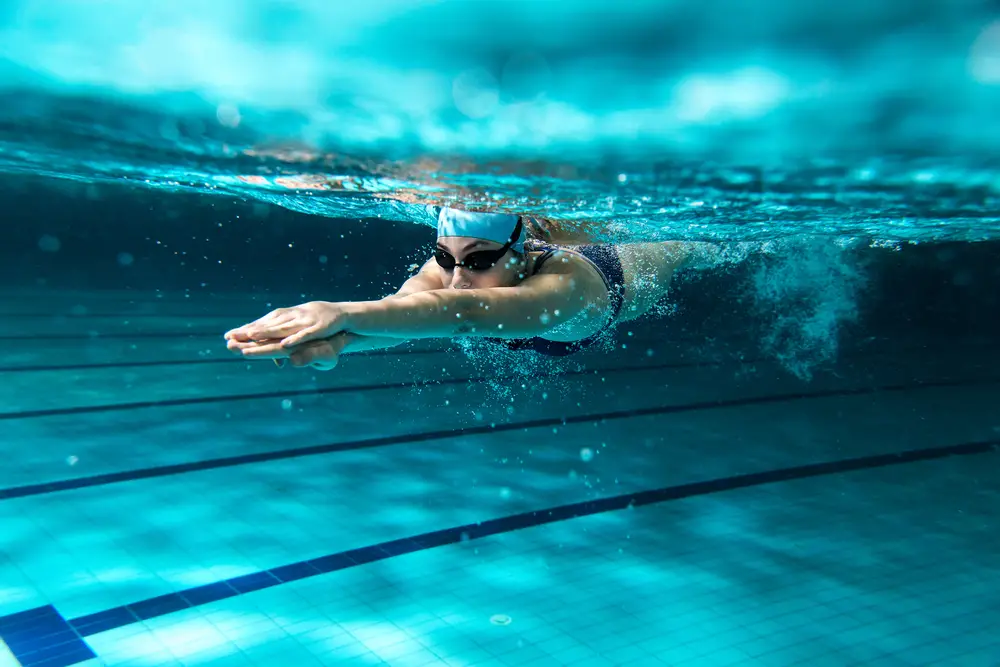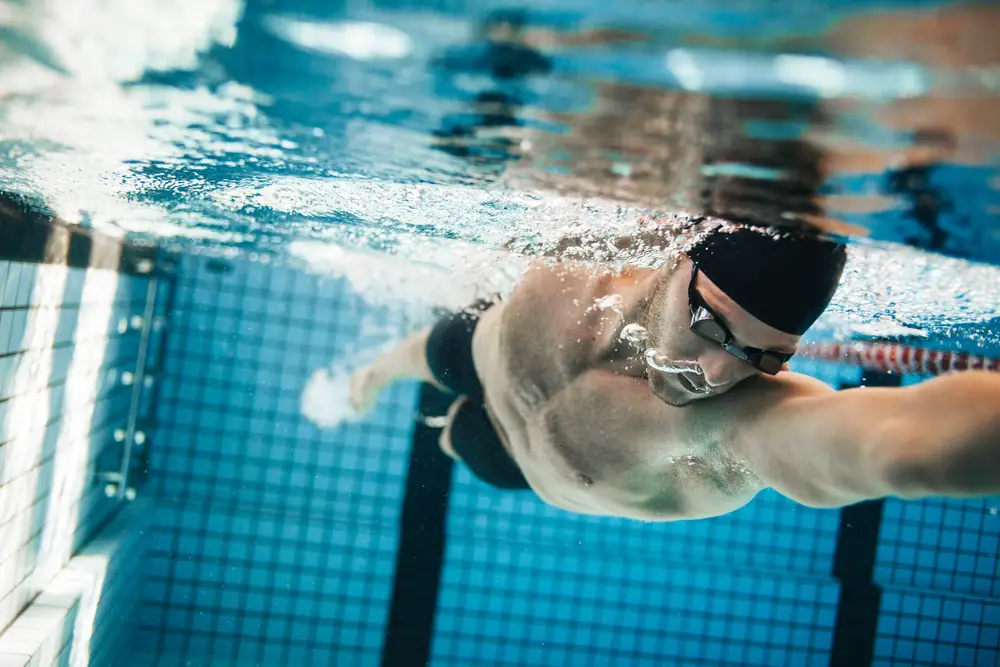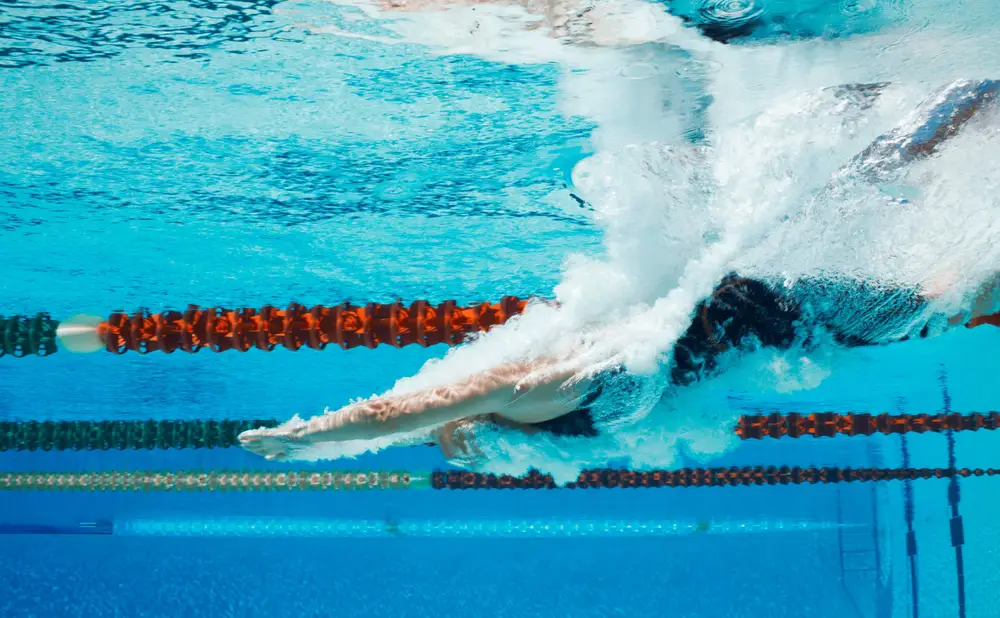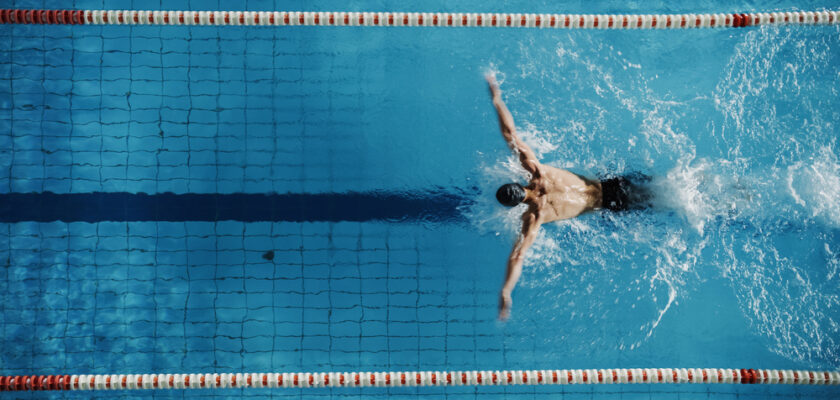Swimming is an aquatic sport with many techniques, styles and a lot of knowledge. It is practiced both recreationally and competitively and is also an essential survival skill. Since ancient times, swimming has been valued not only for its physical benefits, but also for bringing a lot of relaxation and well-being.
Therefore, swimming requires athletes to have an excellent knowledge of the techniques, terminology and regulations that form part of competitions. That’s why we’ve created a swimming glossary, bringing together the main terms used in the sport.
Each term is essential for understanding the sport, facilitating communication between coaches, athletes and professionals in the field. In addition, of course, spectators watch competitions in a different way, with much more knowledge.

In this list, then, you’ll get to know the swimming glossary with terms ranging from swimming styles to technical terms. Check it out!
Open your Betano account and get up to 1,000 reais in bonuses.
Payments via PIX, live games and super odds!
Click here to open your account!
Swimming glossary: complete list
- Freestyle
- Back
- Breaststroke
- Butterfly
- Turn
- Exit
- Medley
- Relay
- Cross-country race
- Speed Race
- Ripple
- Synchronized Swimming
- Hydrodynamics
- Drag
- Propulsion
- Frequency of strokes
- Interval
- Meters Per Second (MPS)
- Buoys
- Palmar
- Duck Foot
- Stingray
- Shoal
- Pace
- Interval Training
- Breathing Technique
- Olympic Turn
- Endurance Training
- Adapting to the Aquatic Environment
- Tapering
Glossário da natação: saiba mais sobre os termos
Adapting to the aquatic environment
Adaptation to the aquatic environment is the process by which the swimmer becomes familiar and comfortable in the water. It is crucial for beginners and directly influences performance.
Drag
Drag is the resistance encountered by the swimmer while moving through the water. Reducing drag is crucial to improving speed and efficiency.
Buoys
Buoys are floating devices used in training to isolate the work of different parts of the body. They can be placed between the legs to focus on arm work.
Butterfly
The butterfly is one of the most difficult styles of swimming, characterized by simultaneous arm movements and a leg stroke called the “dolphin kick”. The technique requires strength and coordination, especially during the breathing phase.
Shoal
A shoal is the term used to describe a group of swimmers training together, usually following a leader who dictates the pace of the group.
Backstroke
In the backstroke, the swimmer remains on their back throughout the entire stroke, alternating their arms in circular movements and flapping their legs to propel themselves. This style requires excellent orientation, as the swimmer cannot see the end of the pool.
Freestyle
The freestyle, or crawl, is the fastest and most commonly used swimming style in competitions. In it, swimmers alternate their arms in circular movements while flapping their legs for propulsion. Breathing is done laterally, turning the head out of the water.
Stroke frequency
Stroke frequency is the number of strokes a swimmer makes in a given time or distance. An efficient stroke rate is essential for maintaining good speed and endurance.
Hydrodynamics
Hydrodynamics refers to the efficiency with which a swimmer moves through the water and involves reducing drag and maximizing propulsion, using specific posture and movement techniques.
Interval
The interval is the rest time between repetitions during a workout. It is an essential part of training, allowing recovery and preparation for the next effort.
Butterfly
Mariposa is another name given to the butterfly style, where the swimmer performs simultaneous arm movements and a leg stroke called the dolphin kick.

Medley
The medley is an event that combines the four swimming styles in a single competition: butterfly, backstroke, breaststroke and freestyle. It can be swum individually or as a relay, where each swimmer on a team swims one style.
Meters per second (MPS)
Meters per second is a measure of speed in swimming that is calculated by dividing the distance swum by the time taken. It is an important metric for evaluating an athlete’s performance.
Synchronized swimming
Synchronized swimming, now known as artistic swimming, is a sport that combines swimming, dance and gymnastics, in which athletes perform choreographed routines to the rhythm of music.
Pace
Pace is the pace a swimmer maintains during a race or training session. Controlling pace is essential for long-distance races, where maintaining a constant speed can determine success.
Palmar
The palmar is a piece of training equipment used on the hands to increase resistance and strengthen the arm muscles during swimming.
Duck foot
The duck foot is a piece of equipment used on the feet to increase the swimmer’s speed and endurance during training, helping to strengthen the legs.
Breaststroke
In breaststroke, the movements of the arms and legs are simultaneous and symmetrical. The arms move back and forth in an arc, while the legs perform a frog-like kicking motion. This style is slower in swimming, but requires a lot of technique.
Propulsion
Propulsion is the force generated to move the body forward in the water. In swimming, propulsion is achieved through the coordinated movements of the arms and legs.
Backstroke
Cross-country races are long-distance races, usually 800 meters or more. They require endurance, rhythm strategy and a good ability to maintain technique for long periods.
Speed races
Speed races are short and intense, usually 50 or 100 meters. Technique, the use of muscles and the ability to maintain a high speed are essential.
Lane
The lane is the area of the pool marked off by floating ropes where each swimmer competes. It helps to avoid collisions and keep the swimmers aligned.
Relay
A relay is a team event in which each member swims a specific section of the total distance. The most common relay races are 4×100 meters and 4×200 meters. The exchange between swimmers must be well coordinated to avoid disqualification.
Exit
The exit is the start of the swimming race, and can be done from above a starting block, from the side of the pool or in the water, depending on the style and category of the competition. A good exit can make a significant difference to the final result of the race.
Tapering
Tapering is the final phase of training before an important competition, where the training load is reduced to allow the body to recover and reach peak performance.
Breathing technique
Breathing technique is the way in which the swimmer coordinates their breathing with their swimming movements. Correct technique is essential to improve efficiency and avoid fatigue.
Endurance training
Endurance training focuses on improving the swimmer’s cardiovascular and muscular capacity, allowing them to maintain their technique and speed for longer.
Interval training
Interval training is a form of training that alternates periods of high intensity with periods of rest or low intensity. It is effective for improving endurance and speed.
Turn
The flip is a technique used to reverse the direction of the swim when reaching the edge of the pool during a race. There are different types of turns, such as the somersault turn in the freestyle and backstroke, and the open turn in the breaststroke and butterfly.
Olympic flip
The Olympic flip is an advanced flip technique used in swimming competitions. In it, the swimmer does a somersault when they reach the edge and pushes themselves back for the next lap.
Swimming glossary
Understanding swimming terms and techniques is essential for beginners and experienced swimmers alike. This knowledge not only improves performance and efficiency in the water, but also contributes to safer and more conscious practice.
Swimming is a rich and complex activity that combines technique, endurance and strategy. Investing time in learning the elements that make it up can transform the experience of swimming, making it more rewarding and productive. With a solid foundation of knowledge, swimmers of all levels can explore the full potential of this fascinating sport.
Swimming Glossary: complete list
- Freestyle
- Back
- Breaststroke
- Butterfly
- Turn
- Exit
- Medley
- Relay
- Cross-country race
- Speed Race
- Ripple
- Synchronized Swimming
- Hydrodynamics
- Drag
- Propulsion
- Frequency of strokes
- Interval
- Meters Per Second (MPS)
- Buoys
- Palmar
- Duck Foot
- Stingray
- Shoal
- Pace
- Interval Training
- Breathing Technique
- Olympic Turn
- Endurance Training
- Adapting to the Aquatic Environment
- Tapering

Swimming glossary
Now that you know the swimming glossary, you’re ready to check out the competitions, or even practice the sport, with much more knowledge.
If you liked this article, take the opportunity to find out more about the sport and many other sports in our content! Your comments will also be very welcome here!



